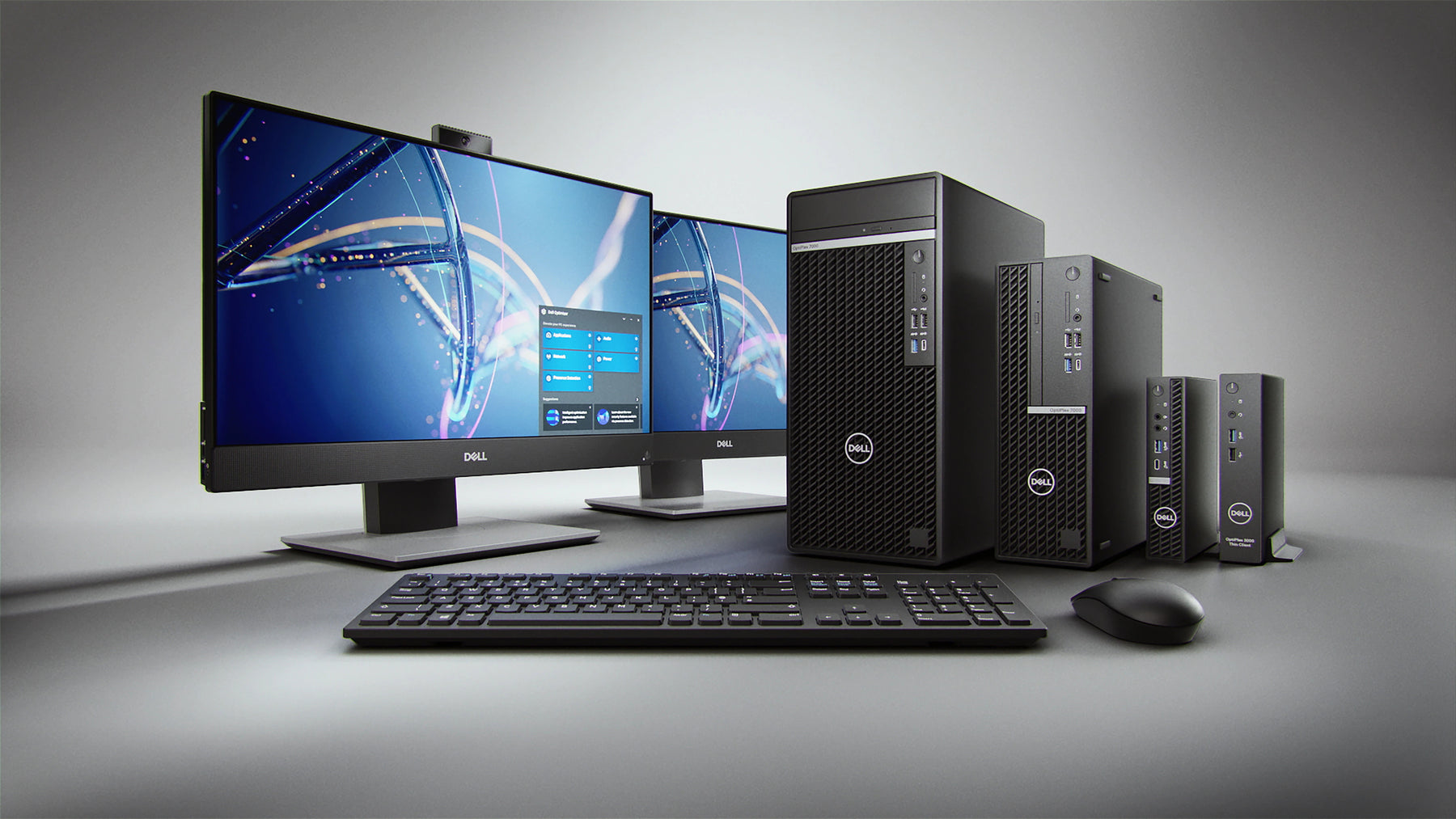Save up to 15%
Save up to 15%

Dell has positioned itself as one of the most popular and trustworthy manufacturers of desktops, laptops, and computer accessories. Whether you’re a consumer looking for great deals or a business buyer in need of bulk desktops for the office, there’s an option available for everyone.
This guide will introduce you to the various product lineups of Dell computers and give you important information on which models to choose for your personal use case.
We’ll also talk about refurbishing and how it can give you the best bang for your buck without compromising on product quality. Keep reading to learn everything you need to know about Dell’s lineup.
Dell’s desktops and laptops come with a variety of CPU choices, RAM options, storage solutions, and other specifications. Let’s define each of them before going further.
The central processing unit does all the “work” that a computer does for you. A higher-end CPU gives you a more responsive system but also costs more.
The most popular Intel CPUs are the Celerons, Pentiums, i3s, i5s, and i7s. AMD is another CPU manufacturer known for its Ryzen CPUs.
Consider the CPU generation or what year the CPU was released. Older i5s, for instance, perform slower than newer i5s. Most people doing regular office work or web browsing will be happy with anything in the i3 to i5 range.
RAM encompasses the “short-term memory” of your machine. The more RAM you have, the more applications it can run at one time and the more tabs you can open in your web browser.
RAM is described as gigabytes — the higher the number, the more power the RAM will provide. Most users will be fine with 4 GB of RAM, but more intense applications will need between 8 or 32 GB.
Certain machines like desktops and laptops aimed at the business market have their RAM user-serviceable, so you can add your own later if you need to.
There are two types of storage to note: solid state drives (SSDs) and hard disk drives (HDDs). SSDs are much faster and run on zero moving parts. They greatly improve the responsiveness of the system, but they’re also a lot more expensive.
HDDs are slower and noisier during operation but much more cost-effective per gigabyte. You can pick up a 1 TB HDD for about half the price of a 1 TB SSD, for instance.
Given that most workflows today are in the cloud, a lot of storage may not even be necessary. Ultimately, you have a choice among 120 GB, 256 GB, 500 GB, 1 TB, or 2 TB.
Windows 10 is the most popular option on the market, and there are two versions of it: Home for personal users and Pro for business users.
Windows 11 introduces a new question: is the upgrade is worth it. The problem is that Microsoft’s newest operating system is only compatible with relatively new CPUs that support its security requirements. If you’re looking for Windows 11 compatibility, make sure you have that filter checked when searching through our refurbished lineup of Dell computers.
Of course, there’s also Chrome OS for Chromebooks, a niche option for those in need of a very basic yet inexpensive computer.
Screen sizes can range from a modest 15” to a 32” curved ultrawide. The larger the display, the more screen “real estate” you’ll have to work with. The right screen size depends on your needs. When it comes to laptops, larger displays will increase their price. However, for desktops, you can start with an affordable monitor and easily upgrade when necessary.
In the market for a Dell refurbished desktop but not sure where to start? Read on to find out how Dell organizes its stationary workstation offerings.
Dell divides its desktops into brand names to show what use case each machine is for.
There are others as well, such as the low-end business lineup known as Vostro and the Precision line for those with high CPU and GPU needs.
Short on desk space? Dell offers all sorts of small form factor, micro, and ultra-small form factor desktops that pack a lot of power in a small package.
Alternatively, you can turn to an all-in-one machine (which packs the monitor and tower components into one unit) to clear up the clutter on your desk. You’ll find all-in-ones within the Inspiron and OptiPlex lines.
Let’s say you’re going to be traveling around with your work. A Dell refurbished laptop may be what you need.
Dell laptops share many of the same brand names as desktops. XPSs are for high-end consumers and creators. Inspiron is the consumer line. Vostro and Precision are for low and high-end business users, respectively.
“Latitude,” however, is a new term. It’s the general business-focused lineup with most of the features professionals need. Dell also offers a line of Chromebooks for those with basic computing needs and a short budget.
Now that you know about Dell’s lineup, which one will you buy? No matter your choice, you can make the most of your budget with a refurbished Dell machine.
Refurb is a MAR-certified refurbisher, which means Microsoft has evaluated and approved our refurbishment process. Ready to take your money further with top-tier refurbished Dell computers? Explore Refurb.io’s selection of certified refurbished Dell computers.{"one"=>"Select 2 or 3 items to compare", "other"=>"{{ count }} of 3 items selected"}